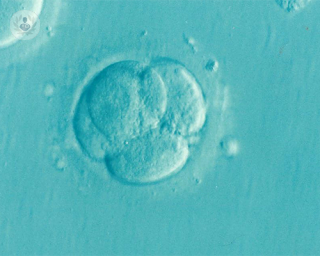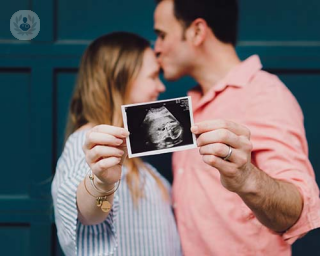In vitro fertilisation (IVF)
Miss Kate Maclaran - Obstetrics & gynaecology
Created on: 12-29-2015
Updated on: 12-05-2023
Edited by: Kate Forristal
What is in vitro fertilisation?
In vitro fertilisation (IVF) is a procedure in which an egg is combined with sperm outside the body, in a laboratory. Once fertilised, the egg is transferred to the woman’s uterus, with the goal of successful pregnancy. It is a common fertility treatment.

Why is in vitro fertilisation performed?
This treatment is an option which can help a woman to become pregnant, in the case of infertility problems, such as:
- Clogged or damaged fallopian tubes
- Advanced maternal age
- Male sterility factor
- Endometriosis
- Unexplained sterility
What happens during in vitro fertilisation?
IVF requires several steps to achieve ultimate success:
- Suppressing the menstrual cycle: with the aid of medication, the regular menstrual cycle is suppressed
- Controlled boost of egg supply: the woman receives a hormonal treatment with medication for approximately 10 days. This is done to stimulate the production of ovules, meaning a greater quantity becomes available. This medication also makes it possible to control the time of ovulation and thus increase the chances that the ovules obtained are suitable for fertilisation.
- Ovarian or follicular puncture: a surgical procedure that consists of extracting the mature ovules from the ovary. The process is carried out by aspiration under anaesthesia and sedation and lasts between 20 and 30 minutes.
- Fertilisation of eggs: the eggs are mixed with the sperm, allowing them to be fertilised
- Embryo transfer: the fertilised embryo are transferred to the womb
Preparing for in vitro fertilisation
The first step when considering any fertility treatment is to visit your GP, who can refer you on to a specialist, or to visit a private fertility specialist or clinic. Once at the clinic, the specialist will speak to you about your fertility history and conduct an examination if necessary.
If IVF is deemed to be the best treatment, you will then be referred for assisted conception. At the clinic or assisted conception unit you and your partner will need to have blood tests, screening tests for sickle cell anaemia and thalassaemia, and your egg count will be investigated.
Aftercare
Once the embryo transfer has been made, you should rest for the remainder of the day.
Generally, you’re advised to wait for 2 weeks before a pregnancy test can be carried out. This time can be stressful and the clinic may offer counselling or support. If the treatment has been successful (and it is important to remember that IVF is not always so), you will be offered regular antenatal care and monitored throughout the pregnancy.
















